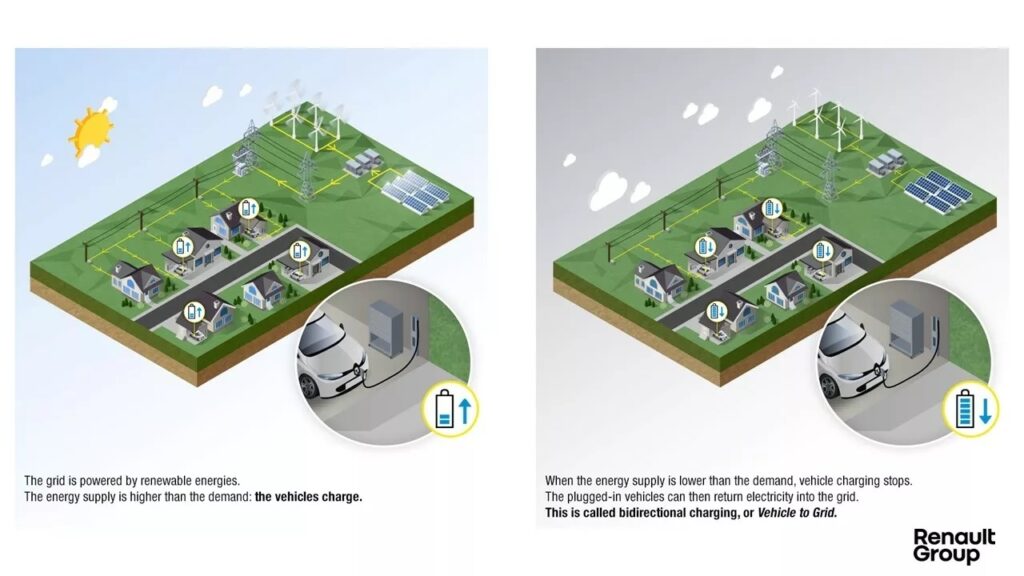Il CEAa particularly important research centre, e Gruppo Renault have developed an on-board battery charger capable of incorporating the innovative technology Vehicle-to-Grid (V2G), designed for electric cars that should come to govern mobility within the next decade.
The high performance V2G charger from CEA and Groupe Renault
The power converter is directly integrated in the vehicle battery charger and is the result of 3 years of research and 11 registered patents. The converter is designed to reduce energy losses and, by exploiting V2G technology, to store electrical energy and then re-enter it into the system.
Innovation is presented above all by the materials chosen for the semiconductors, which are absolutely innovative: we are talking about the so-called Wide Band Gapsuch as gallium nitride (GaN) and silicon carbide (SiC).
Thanks to the Wide Band Gaps, the new architecture allows for reduce energy losses by 30% in the conversion phase and likewise for the heating and cooling of the conversion system.
Furthermore the optimization of active components such as i semiconductors and of passive ones such as i capacitors not reelhas made it possible to reduce the volume and cost of the charger, thus gaining in compactness.
Last but not least, ferrite materials and a power injection molding process known as Power Injection Molding.
“This project with the CEA has gone beyond our expectations, confirming our ability to achieve the desired performance in terms of efficiency and compactness” he explained Jean-Francois Salessy, Director of Advanced Engineering at Groupe Renault.
“It opens up great prospects for power electronics, which constitutes a real challenge for electric vehicles, to make the most of the capacity of the batteries. With V2G recharging, the vehicle places itself at the service of the electricity grid and allows the final consumer to reduce energy costs”.

A higher performance
The charging capacity of the converter goes up to 22KW in three-phase modecharging your vehicle faster without affecting battery life.
In addition, with the unique V2G technology, the energy stored in the battery can be fed back into the electricity system to supply electricity to a detached house, provided it is equipped with bidirectional counter.
The solution is in line with the electromagnetic compatibility standards (CEM).
We are proud to support Groupe Renault in this development,” he said Sebastien Dauve, Director of the Leti Institute of the CEA. «We have been able to combine the Renault Group’s systemic vision on the electrification of the vehicle and the power unit with the expertise of our teams on converter architectures and components; in the end, we have created an architecture suitable to respond to the needs with a strong added value.
To echo the words of François Legalland, Director of the CEA Liten Institute: “The use of innovative materials with patents shared by the Renault Group and the CEA on the battery charger has made possible the production of the dedicated transformer, which is a key component in this type of development, as it allows volumes to be reduced with performances ranging beyond the state of the art“.
An engineering masterpiece, designed for the automotive industry, but also for the power supply of a future that appears ever closer.
[“amazon box = B0BJJXC4D5”]
















Leave a Reply
View Comments